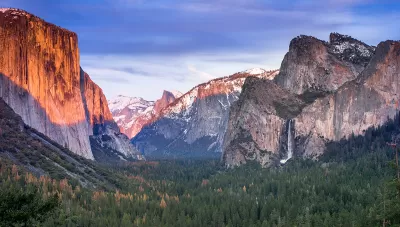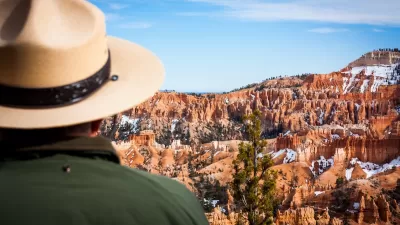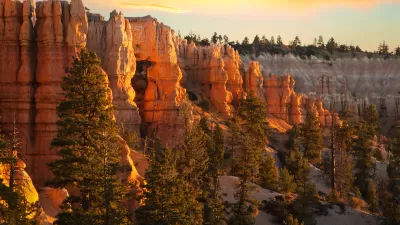A reservation system could help the struggling national parks system manage crowds and protect our public lands from overuse, according to this article.

"America’s national parks face a popularity crisis," writes Michael Childers in MinnPost, and a reservation system—like the one implemented for many parks during the pandemic—could help preserve the lands as intended and make the experience more pleasant for visitors.
The "exponential growth" in many parks' popularity "is generating pollution and putting wildlife at risk to a degree that threatens the future of the park system." As Childers notes, "[p]ark horror stories have grown common in recent years. They include miles-long traffic jams in Yellowstone, three-hour waits to enter Yosemite, trails littered with trash and confrontations between tourists and wildlife."
"The parks are underfunded, overrun, overbuilt and threatened by air and water pollution in violation of the laws and executive orders that protected them," Childers writes. He acknowledges that a reservation system "won’t be a popular solution, since it contradicts the founding premise that national parks were built for public benefit and enjoyment." But to preserve the parks "unimpaired," he argues, "crowd control has become essential in the most popular parks."
Childers also suggests promoting less visited national parks, monuments, and historical sites. "Sites such as Hovenweep National Monument in Colorado and Utah and the Brown v. Board of Education National Historic Site in Kansas deserve attention for their natural beauty and the depth they add to Americans’ shared heritage."
FULL STORY: Overcrowded U.S. national parks need a reservation system

Alabama: Trump Terminates Settlements for Black Communities Harmed By Raw Sewage
Trump deemed the landmark civil rights agreement “illegal DEI and environmental justice policy.”

Study: Maui’s Plan to Convert Vacation Rentals to Long-Term Housing Could Cause Nearly $1 Billion Economic Loss
The plan would reduce visitor accommodation by 25% resulting in 1,900 jobs lost.

Why Should We Subsidize Public Transportation?
Many public transit agencies face financial stress due to rising costs, declining fare revenue, and declining subsidies. Transit advocates must provide a strong business case for increasing public transit funding.

Paris Bike Boom Leads to Steep Drop in Air Pollution
The French city’s air quality has improved dramatically in the past 20 years, coinciding with a growth in cycling.

Why Housing Costs More to Build in California Than in Texas
Hard costs like labor and materials combined with ‘soft’ costs such as permitting make building in the San Francisco Bay Area almost three times as costly as in Texas cities.

San Diego County Sees a Rise in Urban Coyotes
San Diego County experiences a rise in urban coyotes, as sightings become prevalent throughout its urban neighbourhoods and surrounding areas.
Urban Design for Planners 1: Software Tools
This six-course series explores essential urban design concepts using open source software and equips planners with the tools they need to participate fully in the urban design process.
Planning for Universal Design
Learn the tools for implementing Universal Design in planning regulations.
Smith Gee Studio
Alamo Area Metropolitan Planning Organization
City of Santa Clarita
Institute for Housing and Urban Development Studies (IHS)
City of Grandview
Harvard GSD Executive Education
Toledo-Lucas County Plan Commissions
Salt Lake City
NYU Wagner Graduate School of Public Service





























